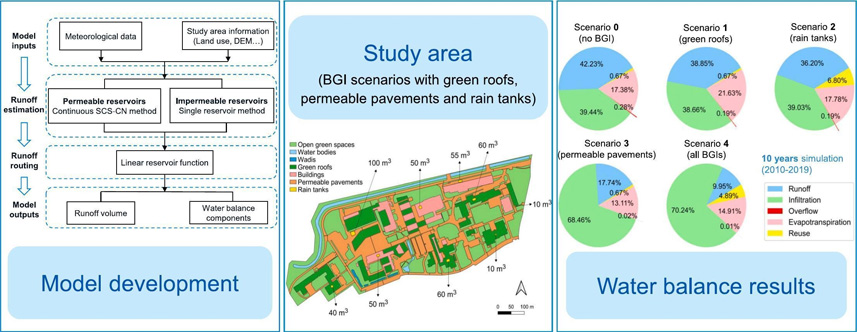Authors: Wu, X., Moustakas, S., Bezak, N., Radinja, M., Alivio, M.B., Mikoš, M., Dohnal, M., Bares, V., Willems, P.
Journal: Science of the Total Environment
Issue / Pages: Vol 948, 174750
Publisher: ELSEVIER
Publication Date: 2024
Title: Assessing the performance of blue-green solutions through a fine-scale water balance model for an urban area
ABSTRACT
Blue and Green Infrastructures (BGIs) are natural or semi-natural systems that are considered an efficient solution to enhance stormwater management.
To assess the performance of BGIs in mitigating floods and droughts in an urban area, a water balance model was developed in this study to simulate runoff formation and propagation.
The developed model features fine spatial and temporal resolutions and flexibly integrates BGIs.
Combining the conceptual single reservoir approach and the empirical continuous Soil Conservation Service Curve Number (SCS-CN) method, the model achieves computational efficiency, enabling long-term simulations that capture both short-term extreme events and long-term water balance.
Its high transferability allows for easy incorporation of local datasets, making it adaptable to various urban contexts.
Applied on a university campus located in Belgium, the model was used to simulate the water balance components of feasible BGIs for the study area, which were green roofs, permeable surfaces and rainwater tanks.
Scenario analysis of both single BGI and combined BGI implementations was conducted, and all BGI scenarios were evaluated based on peak flow and runoff volume reduction and water balance analysis.
Results demonstrate that the implementation of a combination of several BGIs with different functions is an effective solution for both flood control and drought mitigation, as these solutions can significantly reduce runoff flows, increase infiltration and provide considerable rainwater reuse.



